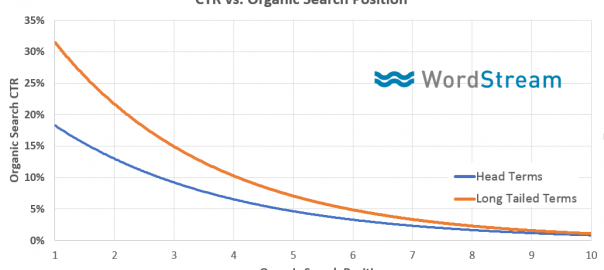Search engines digest and rank websites differently each year. Thanks to machine learning, Google algorithms are becoming more intelligent, humanlike, and will soon surpass human intelligence in more than one way.
Google is also gaining greater access to big data through the search results, Google Analytic accounts, and Androids. Google can now easily reformulate its ranking factors in order to monitor even the most subtle signs of user satisfaction.
In the past, we could see the universally applicable ranking factors that referred to all kinds of websites, and these factors indeed were crucial for formulating the final ranking positions. We could also read plenty of articles about Google’s ranking factors: 30 Most Important Google Ranking Factors A Beginner Should Know, or 6 Current Google Ranking Factors You Should Keep Up With. However, ranking factors were never officially revealed by the Googlers, and Google search experts only vaguely mentioned some of them. Now there are no universally applicable ranking factors.
SEO has been taken to the next level
Each business niche today has its individual standards of a high-quality site, and different requirements need to be met to boost visibility. We can observe various SEO best practices among the different industries, and the best part is, sometimes it’s not a matter of industry but a specific query.
For example, a local business needs a well-optimized Google My Business listing, local citations, plenty of positive local reviews, consistent NAP (Name, Address, Phone), a geotag to show a business’s exact location with directions, business-related rich snippets, well optimized title tags, descriptions for local keywords, etc.
On the other hand, an e-commerce business that operates globally needs optimizations on a different scale. Global companies need diligent – human – translations, a user-friendly website structure for each location and straightforward navi. They also need to host site versions on a local IP, link to local content relevant to the specific country, build links from local resources and connect with local search engines – Baidu if China, Yandex if Russia, etc.
Most of the known (revealed) ranking factors, which can be found in Google’s 200 Ranking Factors: The Complete List, for instance, are still up to date; but their level of importance has already changed or is currently changing.
Some ranking factors, like technical standards, make up the necessary foundation and help your website achieve at least some traction, but they won’t guarantee top rankings anymore.
Other factors, like links, still carry the most weight, but according to this Searchmetrics’ white paper, the importance of backlinks is on the decline. A website ranking won’t be determined primarily by backlinks. Links are still considered an important factor, but they’re not the leading one.
The correlations for backlinks remain high, but their importance for a page’s ranking will continue to decline. – Searchmetrics
Google increasingly relies on user intention, content relevancy and behavioral factors – such as how a user interacts with a page – to rank its search results. The search engine is slowly and consequently rolling out the “customer-first” approach.
Google is trying to make its algorithms a mirror image of the heart, mind, soul, and needs of a customer.
Moreover, real-time indexing intended for the ‘search live coverage carousel’ is predicted to be an important part of the SEO future. It lets publishers surface breaking news more quickly than is currently possible with standard crawling. Also, Google Penguin is real-time. In the past, Penguin was updated periodically, so sites had to wait for the next update to get recrawled and reindexed again to recover finally. Now Penguin’s data is refreshed quickly, and changes are visible faster. It aims to make search results capable of adjusting to the freshly published assets and their enhancements fast.
Content marketing and SEO goals are aligned, and these two specializations are meshing with each other. What can we state for sure? Let’s dive into the deets and specify the top search ranking factors for Google.
1. Content Relevancy
A customer’s journey starts with performing the search, and since the web is noisy with information, ranking high is seriously tricky. It’s not possible to write a mediocre, 500-word article wrapped around a high volume keyword, and expect that it will stand out.
Today’s content strategy should be directed strictly at your marketing personas and delivering accurate content forms and types that meet search intentions. It’s also essential to provide users with the best resource available for a given topic, also known as 10 x content.
You should look at the content writing process holistically by choosing a search term that includes a complete subject area and adjust it to the user intent effectively. Tailor content to your buyer personas, and remember to come up with comprehensive and engaging writing to inspire and educate.
This is a strategy that will win you brand advocates and regular readers who will eagerly await your next release. And having (many) devoted users eventually, translates to ranking high in search results for many related keywords.
*Of course, there are some exceptions to this rule. Google does rank some resources higher even though they don’t have the most relevant content. This is because Google also counts in a brand factor that enables some brands to preserve a more trustworthy and recognizable image than others.
2. User Signals
The approach to content is changing as well. More value is put on user signals determined by the click-through rate, bounce rate and time on site. User behavior can tell a lot about your content.
Click-through rate refers to the average percentage of users that click on a specific result on a search page. This indicates how a particular result compares to other records.

WordStream
Although the top three results in the search statistically reap the most engagement, people usually read titles and descriptions before they click. So click-through rate also expresses how well-written your title tags and meta descriptions are.
Bounce rate confirms whether your content indeed provides the initially promised benefits (in the title and description) to a searcher who lands on your landing page.
If a page’s text is messy, the design is dated, the user experience is poor, the content isn’t readable, or the page happens to be something completely different than expected, users will inevitably go back to the search results, indicating that there was something wrong with the page. That’s a big fail. Bounce rate reflects single page session where a user leaves a page without any interaction. It also helps with evaluating URL relevance when it’s combined with other quality indicators.
The third measure, the length of time a user spends on a site, shows Google your ability to engage with your resources. Of course, the type of query and its intention is crucial for determining whether time on site is a relevant indicator.
The impact of CTR, bounce rate and time on site has significantly risen in the overall ranking since 2014, according to Searchmetrics.
3. Mobile friendliness
Mobile has a special place in Google’s heart – perhaps because there are reportedly more searches performed on mobile devices than on desktop. Investing in mobile is now imperative. According to Greg Stuart, CEO of the Mobile Marketing Association, most CMOs are embracing mobile, but “there is a knowing versus doing gap. They know they need to do it, but how do they do it?”
Mobile friendliness is a highly important ranking factor, so it’s about “time to take action and not just do mobile, but do mobile right.”
Mobile traffic is regularly growing. What’s more, Google recently announced that it’s been experimenting with mobile-first indexing. Although it’s still in the testing phase, this clearly indicates in what direction SEO is heading. Google is about to make the mobile version the main index for ranking websites. Check out this Mobile SEO advice by Barry Schwarz
This is the very last warning call to all those whose sites still perform poorly on mobile to fix this issue before their overall rankings start to decline in the SERPs. If your mobile version isn’t flawless, do something about it, or at least make the mobile experience up to par with the desktop standards.
If you aren’t sure whether your website meets the criteria for being mobile friendly, login to your Search Console account, and view the Mobile Usability section. Google reports any mobile related issues.
Key Takeaway
Google started to update its search algorithms more imperceptibly; the changes are getting more flexible. Review what you know about search ranking factors and put this SEO advice at the top of your 2017 priority list.
This piece is devoted to the top three ranking factors, but of course, there is always more to add. There are many different ranking signals to consider as well like user experience, social media, backlinks and technical issues. All ranking factors combined contribute to your final keywords positions; what is different is the effect each factor has on your rank.
Would you add anything more to this write-up? Let me know in the comments below.
Digital & Social Articles on Business 2 Community(87)
Report Post





